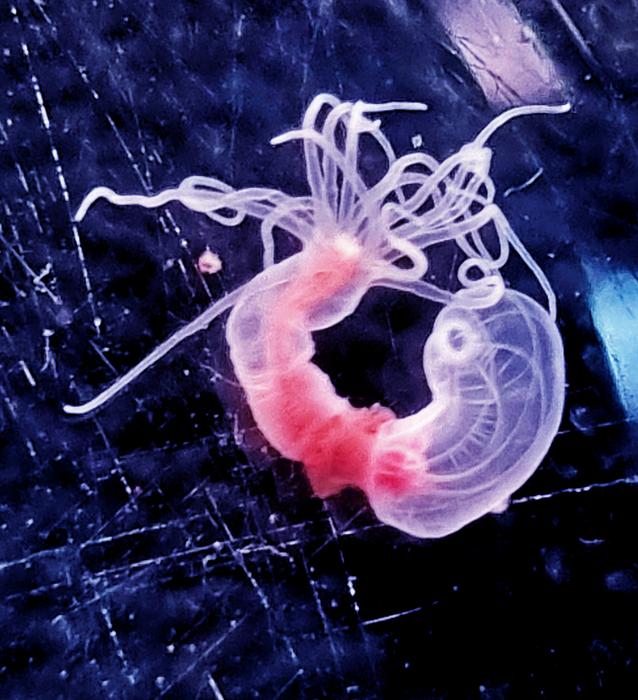New study reveals insights into predator-prey dynamics in the animal kingdom, focusing on sea anemones. The surprising discovery of a native anemone population lacking the Nv1 neurotoxin led to an investigation into its impact on defending against grass shrimp, a native predator. Anemones without Nv1 showed weakened defensive abilities, while the neurotoxin, when present, attracted mummichog fish, natural predators of grass shrimp. This research enhances our understanding of marine ecosystems and the intricate balance of predator-prey interactions and tradeoffs.

Credit: Yehu Moran
New study reveals insights into predator-prey dynamics in the animal kingdom, focusing on sea anemones. The surprising discovery of a native anemone population lacking the Nv1 neurotoxin led to an investigation into its impact on defending against grass shrimp, a native predator. Anemones without Nv1 showed weakened defensive abilities, while the neurotoxin, when present, attracted mummichog fish, natural predators of grass shrimp. This research enhances our understanding of marine ecosystems and the intricate balance of predator-prey interactions and tradeoffs.
A new study led by Prof. Yehu Moran from the Faculty of Sciences at Hebrew University delves into the complex world of predator-prey interactions in the animal kingdom, with a focus on the starlet sea anemone Nematostella vectensis, a distant relative of corals and jellyfish. The research introduces an innovative genetic manipulation tool capable of significantly reducing both RNA and protein levels of Nv1, a major neurotoxin in these marine organisms.
One of the study’s unexpected findings was the identification of a native anemone population lacking the Nv1 neurotoxin. This discovery prompted an in-depth exploration of the consequences on the anemones’ defensive capabilities against grass shrimp, its native predator. The results reveal that anemones without the neurotoxin exhibit a noticeable reduction in defensive capabilities, exposing a three-level interaction within an ecosystem involving three different organisms at the molecular level.
The neurotoxin, in its absence, was found to play an indirect defensive role by attracting mummichog fish, known predators of grass shrimp. This intricate predator-prey dynamic sheds light on the interconnected relationships within marine ecosystems.
The study’s significance lies not only in advancing our understanding of predator-prey relationships but also in uncovering a captivating evolutionary tradeoff. Prof. Yehu Moran emphasizes, “The reduction of Nv1 levels in the anemones not only impacts their defensive abilities but also leads to faster growth and increased rates of sexual and asexual reproduction.”
The research introduces a pioneering genetic manipulation tool that allows researchers to explore the direct and indirect effects of toxin genotypes on predator-prey dynamics. These findings have broader implications for marine ecology, potentially informing conservation efforts and contributing to a more nuanced understanding of the delicate balance within ecosystems.
Journal
Science Advances
DOI
10.1101/2023.07.24.550294
Method of Research
Experimental study
Subject of Research
Animals
Article Title
Venom tradeoff shapes interspecific interactions, physiology and reproduction
Article Publication Date
13-Mar-2024




